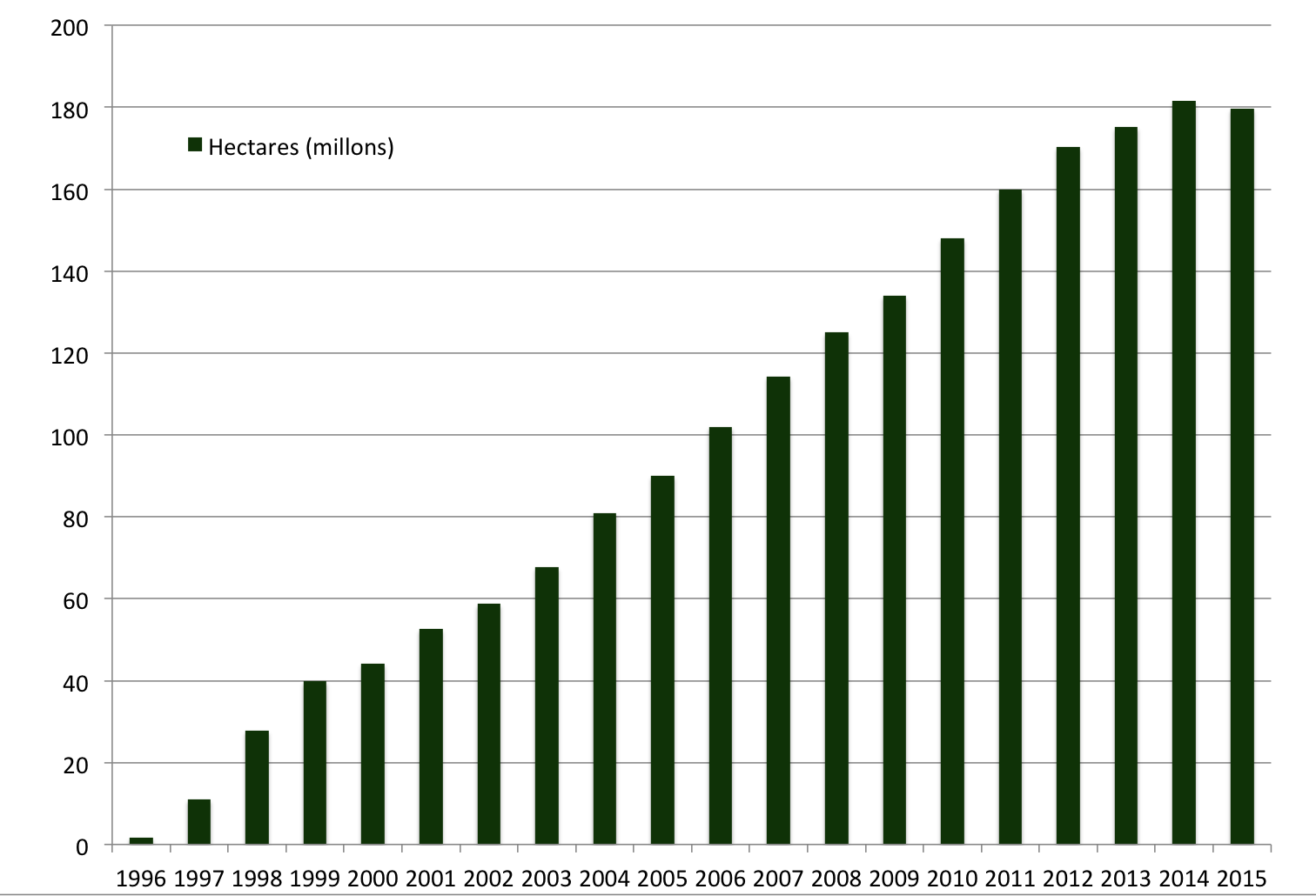“When you alter the genetics of living things, they don’t always behave as you expect.” Michal Hansen, PhD – Senior Scientist at the US Consumers Union
Genetically modified organisms (GMOs) have an increasing presence in the majority of products we use every day. Not only are we often left completely unaware of their existence but we also do not understand how they work or what impact they truly have.
Genetic engineering in agriculture has been part of our global food system for over 20 years and global agrochemical corporations continue to use technology to customize nature in new and riskier ways. Due to the innovations of biotech we have synthetically increased yields, preserved the shelf life of fruit and vegetables and temporarily strengthened crop protection from a variety of pests and diseases. The question we need to ask ourselves now is what are the consequences of such pervasive biological intervention?
GMO corn and soy were first introduced to global agriculture in 1996 and over the following decade the amount of corn grown in the United States only reached 8%. That number has now shot up to more than 90% and the crops that aren’t GMO are still likely to be contaminated due to wind and pollination from birds and bees. At least 80% of our packaged food contains GMO ingredients, as do many of the natural foods that fill our supermarket shelves.
Biotech Crops in the World
Source: ISAAA (2016)
While there is very minimal scientific evidence proving the danger or safety of consuming GMO food, the true threat for global health and our food supply is the fact that this technology allows and even supports the widespread use of synthetic pesticides. This is easy to understand when you consider the huge conflict of interest in our global food industry. The six largest biotech companies in the world that produce GMO seeds also produce the synthetic pesticides that complement them. This rise in GMOs has therefore occurred alongside a significant increase in synthetic pesticide and fertilizer use despite their well-documented damage to global health and the environment.
The results of one of the latest scientific comparisons between GMO and non-GMO corn by the Environmental Protection Agency in the United States found that the former not only contained glyphosate but also formaldehyde; the latter, meanwhile, contained far more calcium, potassium, and zinc than its genetically modified cousin, further calling into question claims of a nutritionally superior genetically modified product.
Since the introduction of GMO foodstuffs in the mid-1980s, there has been a profound increase of autoimmune disorders such as type 1 diabetes, lupus, celiac disease and allergies. The US National Health Survey found that since 1999 the number of children with food allergies doubled and those with skin allergies jumped by 69%. According to the United Nations Food and Agricultural Organization 75% of the world’s crop diversity has been lost in recent years due to GMO food production, drastically impacting our resources for food security and global health. The World Wildlife Fund estimates that we 50,000-70,000 plant species are relied on for traditional and modern medicine.
While there are indeed some short-term benefits to genetically modified food products, we do not fully understand the long-term consequences of such pervasive biological intervention for our global food supply. These combining factors are leading the revolution in modern agriculture towards organic alternatives.
